What is the relation between Ic and Ib in saturation for a BJT? In some places I have seen that in saturation Ic < βIb. Is this true, and if yes, why?
-
What do you understand saturation to mean, and how does it differ from linear operation? Without that insight, it it will be difficult for us to answer exactly what your confusion is. – Neil_UK Jan 11 '23 at 17:27
-
2@Neil_UK,In the saturation mode, both the junctions of the transistor (emitter to base and collector to base) are forward biased. In the cutoff mode, both the junctions of the transistor (emitter to base and collector to base) are reverse biased. In the active mode, one junction (emitter to base) is forward biased and another junction (collector to base) is reverse biased.This is my understanding about 3 regions of operation. – Hari Jan 11 '23 at 17:31
-
1https://electronics.stackexchange.com/questions/311243/bjt-base-current-calculation/311306#311306 – G36 Jan 11 '23 at 17:37
-
can I say Ib in saturation is more than Ib in active region – Hari Jan 12 '23 at 05:34
3 Answers
Definition of saturation:
A collector current that produces a collector voltage Vc which is smaller than the base voltage Vb (npn case).
That means: Because of Vbc>0 the base-collector junction now is forward biased (in contrast to the "normal" operation) and the base current Ib now consists of two parts (through the emitter and through the collector node). As a consequence, the base current Ib does not correspond any longer to the classical relation Ib=Ic/B.
In order to bring the npn transistor into saturation, the voltage Vbe must produce a collector current which can fulfill the above mentioned condition Vc<Vb. This condition requires a sufficiently large voltage drop across the collector resistor Rc.
Therefore, a base current that is - as a rule of thumb - ten times larger than anticipated by the relation Ib=Ic/B is a safe indication for saturation.
Now - in practice, we are using such a stage as a switch which is activated by a signal voltage Vo of some volts (typical 5 or 6 volts). In this case, we must use a series resistor Rs between the signal source and the base node which allows a voltage drop of Vs=Vo-Vbe. As a consequence: Rs=Vs/Ib with a current Ib that is app Ib=(Ic/B)*10.
- 24,857
- 2
- 23
- 52
This is from onsemi's BC547 datasheet:
The active region corresponds to the vertical part of these curves. In this region, for a constant collector current, the base current also is (almost) constant.
The saturation region corresponds to the horizontal part of these curves. A change in base current has (almost) no effect.
When you are using a BJT as a digital switch, you want to minimize VCE. So to ensure that you are in the saturation region, away from the knee of the curve, you set the base current as (typically) one tenth of the desired collector current. (This factor of ten is just a rule of thumb.)
- 18,161
- 5
- 40
- 67
Saturation occurs when the collector voltage falls between the base voltage and the emitter voltage. It's that simple.
There is very light saturation that occurs when the collector voltage is very close to the base voltage (within millivolts of it.)
And there is deeper saturation that occurs when the collector voltage is very closer to the emitter voltage than to the base voltage.
In general, saturation means that the collector appears to be a voltage source. Active mode (not saturation) means the collector appears closer to a current source.
- 3,766
- 1
- 1
- 10
-
It's also in saturation if the collector voltage is lower than the emitter voltage (with the base voltage higher than either). – Hearth Jan 12 '23 at 05:22
-
It's difficult, @Hearth, to have an emitter voltage outside of the forward-biased base-emitter pair unless directly driven. Certainly, the BJT itself cannot achieve that on its own. – periblepsis Jan 12 '23 at 05:46
-
-
Isn't that getting into a bit of rarified atmosphere @Hearth and beyond an expectation for an answer? Also, perhaps just rename the leads due to usage despite the physical asymmetry. And who wants to write a book over this question? – periblepsis Jan 12 '23 at 17:09
-
I merely mean to say that your assertion in the first line that saturation is when the collector voltage is between the base and emitter voltages is incorrect. While that condition is saturated, it is not every possible state of saturation. – Hearth Jan 12 '23 at 20:48
